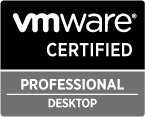Reading Time: 2 minutesThere is an performance monitor at VM level that show always a null value: it’s the VM Power Graph. The same monitor at host level show the power usage of the specific host. But by default, the power usage of the VMs are not calculated. To enable this experimental feature you must change an advanced parameter (Power.ChargeVMs) on each host (by default, as show in the picture, is zero… it must be changed to 1):
Browsing Posts in General
Reading Time: 5 minutesThe original post is avilable on the VMTN Community blog: Guest post: VMTN Community and Social Media I would like to talk about how VMware Community compares with (and complements) other social networks and media. I’m a VMware Community Moderator, but I’m writing this post as a “normal” Community user. I do not consider myself a social media guru, but just a beginner. If you want to be precise, the title of this post is not exactly correct, because the Community is just another form of social network. However, there are differences between the Community […]
Reading Time: 3 minutesOne of the “issue” with vmdk in thin format is that they start “small” and then grow when you add new data… But when you delete some data, the vmdk file size is not reduced. To be honest this issue is more related to the guest file systems that does never delete the block data, but only the metada (or some of them). Of course at guest OS level you will see the right disk usage, but this will probably not match the one that you see at VMware level (that usually will be bigger).

Reading Time: < 1 minuteToday has started the beta period for the VCP5-DT exam (of course on View 5). The exam is available through December 20, 2011. I’ve received the official invite, but unfortunately in my Country there is any free seat for the entire beta period (this because only a subset of the testing center are authorized and in my Country there is a single center). By the way, the VCP511-DT beta exam consists of 210 questions and a short pre-exam survey consisting of 7 questions. The time limit for the beta exam is 225 minutes, with an […]
Reading Time: 2 minutesThe RDM disks are a feature of VMware vSphere (but was present also in Virtual Infrastructure) to make a “mapping” between a LUN (or logical disk) to a VM (is similar to a disk pass-through). This feature can be used in different cases, for example: to support disk larger than 2 TB (only in vSphere 5 with physical RDM) and to implement guest clustering with shared storage (still only with physical RDM). But there is an issue (or a feature :) ) that does not allow to add a RDM disk from the GUI for […]
Reading Time: 2 minutesIn the previous post I’ve consider the cases and scenarios of a “non supported” configurations. But what’s happen with “supported” configurations? Are they always working and always in the best way? A supported configuration means that it can work well, but in specific situations, cases, scenarios. Usually a good rule could be make a good analysis and a good virtual design before choose the single pieces. A supported configuration does not mean that also meets requirements like availability, scalability and performance. For example there are a lot of entry storage that are VMware certified, but […]
Reading Time: 2 minutesIn previous posts related to vSphere 5 upgrade, I’ve talked several time about the HCL and his relevance. For a production environment, have a completed supported configuration, in each parts (hardware, software, firmware, …) IMHO is mandatory. But “not supported” not always means “not working”. There are different scenarios with an “unsupported configuration”:










